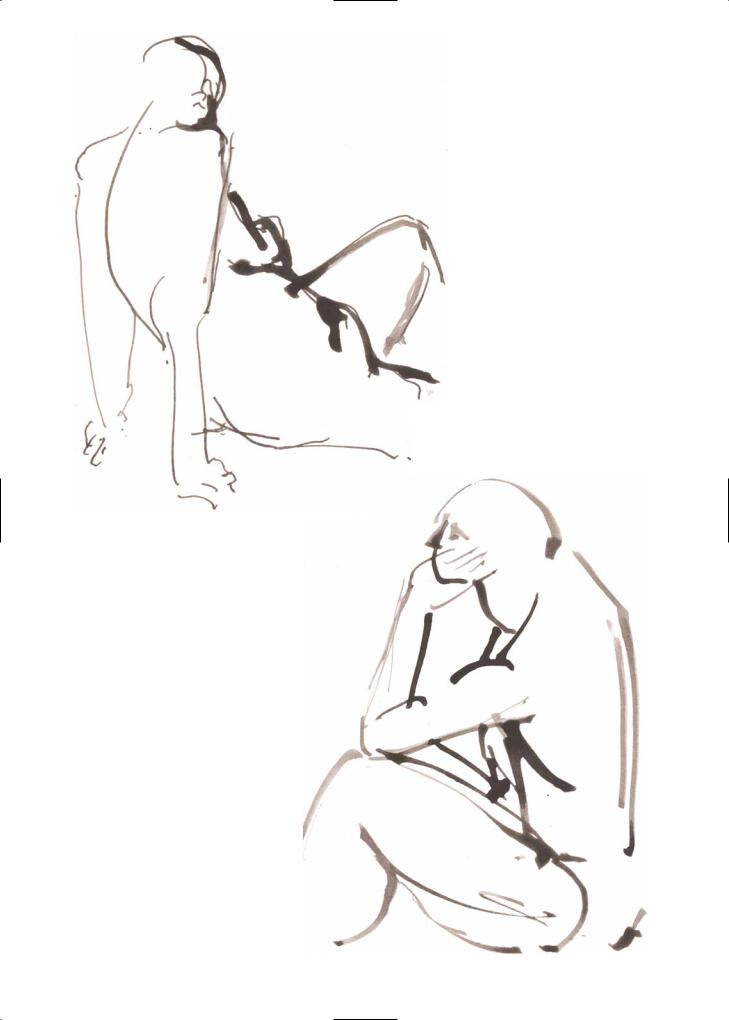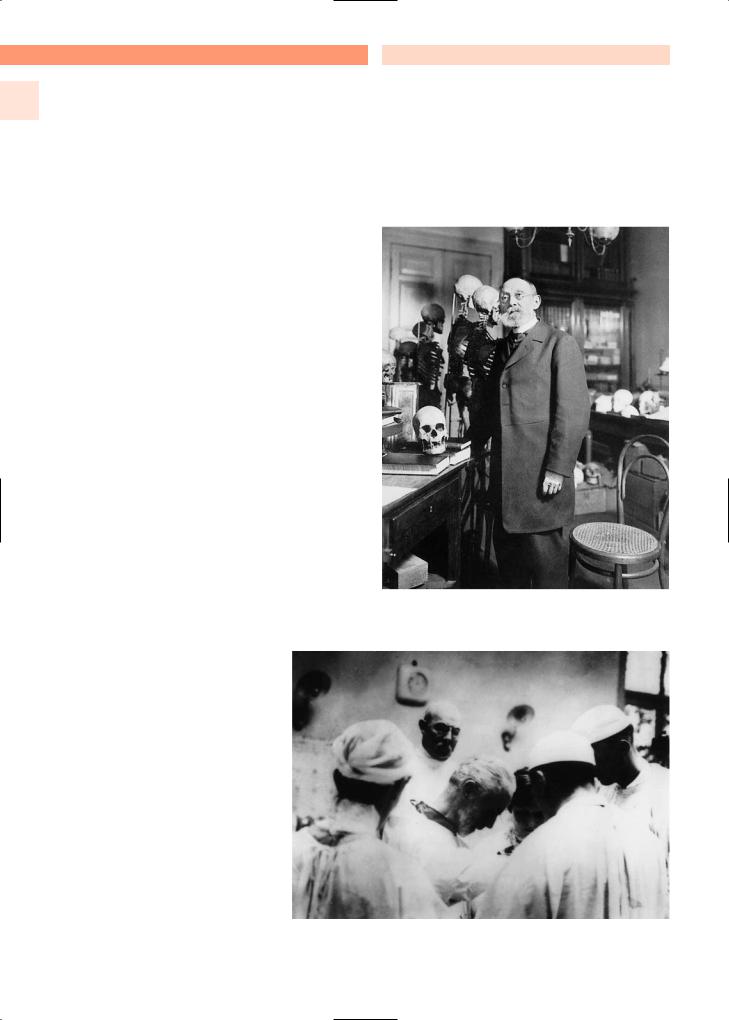
Atlas of breast surgery
.pdf
Ismail Jatoi
Manfred Kaufmann
Jean Y. Petit
Atlas of Breast Surgery
Illustrator
Hans J. Schütze

Ismail Jatoi
Manfred Kaufmann
Jean Y. Petit
Atlas of Breast Surgery
With 132 Figures

Ismail Jatoi M.D., Ph.D., F.A.C.S.
Uniformed Services
University of the Health Sciences
4301 Jones Bridge Road
Bethesda, Maryland 20814
USA
Professor Manfred Kaufmann M.D.
Klinik für Geburtshilfe und Gynäkologie J. W. Goethe-Universität Theodor-Stern-Kai 7
60590 Frankfurt Germany
Jean Y. Petit M.D.
Istituto Europeo Di Oncologia
Via Ripamonti 435
20141 Milan
Italy
Library of Congress Control Number: 2005924216
ISBN-10 3-540-24351-8 Springer Berlin Heidelberg New York ISBN-13 978-3-540-24351-9 Springer Berlin Heidelberg New York
This work is subject to copyright. All rights are reserved, whether the whole or part of the material is concerned, specifically the rights of translation, reprinting, reuse of illustrations, recitation, broadcasting, reproduction on microfilm or in any other way, and storage in data banks. Duplication of this publication or parts thereof is permitted only under the provisions of the German Copyright Law of September 9, 1965, in its current version, and permission for use must always be obtained from Springer. Violations are liable to prosecution under the German Copyright Law.
Springer is a part of Springer Science+Business Media springeronline.com
© Springer-Verlag Berlin Heidelberg 2006
Printed in Germany
The use of general descriptive names, registered names, trademarks, etc. in this publication does not imply, even in the absence of a specific statement, that such names are exempt from the relevant protective laws and regulations and therefore free for general use.
Product liability: the publishers cannot guarantee the accuracy of any information about dosage and application contained in this book. In every individual case the user must check such information by consulting the relevant literature.
Editor: Gabriele Schröder, Heidelberg, Germany
Desk Editor: Stephanie Benko, Heidelberg, Germany
Production: ProEdit GmbH, 69126 Heidelberg, Germany
Cover: Frido Steinen-Broo, EStudio, Calamar, Spain
Typesetting: K. Detzner, 67346 Speyer, Germany
Printed on acid-free paper 24/3151 ML 5 4 3 2 1 0

Artist: Otfried Schütz


Preface
In recent years,there have been several important developments in the surgical management of breast diseases. We have witnessed the emergence of new techniques for tumor resection, reconstructive surgery, lymph node assessment, and cosmetic surgery, to name a few. Lately, the management of breast diseases has received considerable attention in the lay media,and patients today are not only demanding effective surgical treatments, but good cosmetic results as well. Thus, perhaps more than any other field, breast surgery has evolved into both a surgical science and an art. This atlas describes various surgical techniques for treating diseases of the breast, incorporating both the science and the art of this unique field.
This atlas provides a transatlantic perspective. The authors are from the United States, Germany, and Italy, and have a special interest in the treatment of breast diseases. Surgical techniques from both sides of the Atlantic are described, and this should appeal
to readers who want to broaden their surgical repertoire. The management of both malignant and benign diseases of the breast is outlined, with illustrations to highlight key aspects of surgical techniques. Particular emphasis is placed on techniques that provide good cosmetic outcomes.
The completion of this atlas has required the collaborative effort of many individuals.We are particularly indebted to the editorial staff of the SpringerVerlag publishing company for their expert assistance and guidance. We wish to especially thank Ms. Stephanie Benko and Ms. Gabriele Schroeder of the Springer-Verlag office in Heidelberg, Germany, for their support in this endeavor and also Mrs. Sarah Price for the copy-editing. For the excellent illustrations and good cooperation we thank the artist Hans Jörg Schütze, Cologne, Germany. We sincerely hope that surgeons and surgically experienced gynecologists will find this atlas a valuable aid in the management of diseases of the breast.

Contents
Chapter 1 |
|
|
Chapter 4 |
|
||
Historical Overview of Breast Surgery |
|
|
Surgery for Benign Breast Diseases |
|
||
|
|
|
4.1 |
Cyst Aspiration . . . . . . . . . . . . . |
43 |
|
Chapter 2 |
|
4.2 |
Excision of Intraductal Papilloma . . . |
45 |
||
Anatomy |
|
|||||
|
4.3 |
Excision of Giant Fibroadenoma . . . . |
46 |
|||
|
|
|
||||
2.1 |
Surface Anatomy of the Breast . . . . . |
7 |
4.4 |
Drainage of a Breast Abscess . . . . . . |
47 |
|
2.2 |
Breast Development . . . . . . . . . . . |
8 |
4.5 |
Surgical Management of Gynecomastia |
50 |
|
2.3Organization of the Ductal-Lobular
|
System and its Diseases . . . . . . . . . |
10 |
|
|
|
|
|
|
|
Chapter 5 |
|
||||
2.4 |
Blood Supply of the Breast . . . . . . . |
11 |
|
|
|||
|
Biopsy Procedures |
|
|||||
2.5 |
Anatomy of the Axilla . . . . . . . . . . |
12 |
|
|
|||
5.1 |
Incision Lines for Excisional Biopsy . . |
55 |
|||||
2.6 |
Latissimus Dorsi Muscle |
|
|||||
|
5.2 |
Variants of Incisions and Extent |
|
||||
|
and Related Muscles . . . . . . . . . . |
13 |
|
||||
2.7 |
Anterior View of Latissimus Dorsi |
|
|
|
of Breast Cancer Surgery . . . . . . . . |
57 |
|
|
5.3 |
Lumpectomy (Wide Excision) . . . . . |
59 |
||||
|
Muscle and Blood Supply |
|
|||||
|
(Pectoralis Major Muscle Removed) . . |
14 |
5.4 |
Specimen Management |
|
||
|
|
|
|
||||
2.8 |
Anterior Abdominal Wall |
|
|
|
for the Pathologist . . . . . . . . . . . |
60 |
|
|
and Blood Supply . . . . . . . . . . . . |
15 |
|
|
|
|
|
Chapter 3 |
Chapter 6 |
|
Surgery for Breast Carcinoma |
||
Diagnostic Procedures |
||
|
3.1 |
Fine Needle Aspiration . . . . . . . . . |
19 |
3.2 |
Core Needle Biopsy . . . . . . . . . . . |
22 |
3.3 |
Overview of Biopsy Techniques . . . . |
30 |
3.4 |
Needle-Localized Biopsy . . . . . . . . |
33 |
3.5Microductectomy . . . . . . . . . . . . 37
3.6 |
Subareolar Dissection . . . . . . . . . . |
39 |
3.7 |
Mammary Ductoscopy . . . . . . . . . |
40 |
6.1 |
Modified Radical Mastectomy . . . . . |
61 |
6.2 |
Simple Mastectomy . . . . . . . . . . . |
67 |
6.3Breast-Conserving Cancer Surgery . . . 67
6.4Axillary Lymph Node Dissection
|
(Level I, Level II, Level III) . . . . . . . |
78 |
6.5 |
Sentinel Lymph Node Biopsy . . . . . . |
81 |
6.6 |
Internal Mammary Node Biopsy . . . . |
83 |
6.7 |
Venous Access for Chemotherapy . . . |
83 |
|
References . . . . . . . . . . . . . . . . |
84 |

X
Chapter 7
Plastic and Reconstructive Breast Surgery
7.1Immediate and Delayed
|
Breast Reconstruction . . . . . . . . . |
85 |
7.2 |
Placement of Definitive Prosthesis . . . |
85 |
7.3 |
Breast Reconstruction with Expander . |
91 |
7.4 |
Hypothesis to Explain Capsular |
|
|
Contracture . . . . . . . . . . . . . . . |
93 |
7.5Suspension Technique
|
(Advancement Abdominal Flap) . . . . |
94 |
7.6 |
Latissimus Dorsi Flap . . . . . . . . . . |
96 |
7.7 |
Total Breast Reconstruction |
|
|
with a Totally De-epithelialized |
|
|
Latissimus Dorsi Flap |
|
|
and Autologous Latissimus Flap . . . . |
99 |
7.8Latissimus Dorsi Flap
to Repair Glandular Defects
Following Quadrantectomy . . . . . . . 100
7.9 |
Pedicle TRAM Flap Reconstruction . . |
101 |
7.9.1 |
Abdominal Closure . . . . . . . . . . . |
102 |
7.9.2 |
Free Flaps . . . . . . . . . . . . . . . . |
103 |
7.10 |
Nipple Reconstruction . . . . . . . . . |
109 |
Contents
7.11 |
Thoracoepigastric Cutaneous Flap |
|
|
for Large Thoracic Wall Defects . . . . |
111 |
7.12 |
Partial (or Total) Reconstruction |
|
|
with Omental Flaps . . . . . . . . . . . |
112 |
7.13Reduction Mammoplasty . . . . . . . . 113
7.14Reduction Mammoplasty:
|
Vertical Technique (Lejour) . . . . . . . |
115 |
7.15 |
Reduction Mammoplasty: |
|
|
Inferior Pedicle Technique . . . . . . . |
117 |
7.16 |
Round Block Technique |
|
|
of Reduction Mammoplasty . . . . . . |
119 |
7.17 |
Breast Ptosis Classification . . . . . . . |
121 |
7.18 |
Mastopexy . . . . . . . . . . . . . . . |
122 |
7.19Round Block Technique for Mastopexy . 122
7.20Mastopexy: Oblique Technique
(DuFourmentel) . . . . . . . . . . . . 125
7.21Augmentation Mammoplasty . . . . . . 126
7.22Nipple Plasty for Inverted Nipple . . . . 129 References . . . . . . . . . . . . . . . . 130
Subject Index . . . . . . . . . . . . . . . . . 131

Chapter 1
Historical Overview
of Breast Surgery
The earliest reference to the surgical treatment of breast cancer can perhaps be found in what is now known as the “Edwin Smith Surgical Papyrus,” a series of medical case presentations written in Egypt between 3000 and 2500 b.c. [1]. In those writings, it is clearly documented that physicians in ancient Egypt extirpated tumors of the breast. However, there was considerable controversy surrounding the surgical treatment of breast cancer throughout ancient times. Indeed, Hippocrates argued that breast cancer was a systemic disease, and that extirpation of the primary tumor made matters worse [2]. In about 400 b.c. he warned, “it is better not to excise hidden cancer, for those who are excised quickly perish; while they who are not excised live longer.”
Similarly, Galen believed that breast cancer was a systemic disease, and promulgated the “humoral theory” to account for its pathogenesis [3]. Galen proposed that the breast tumor was a coagulum of black bile. He postulated that a woman’s monthly menstrual flow relieved her of excess black bile, and that this accounted for the increased incidence of breast cancer among postmenopausal women. Yet, Galen strongly advocated surgery for the treatment of breast cancer. He urged surgeons to “excise a pathologic tumor in a circle in the region where it borders on the healing tissue.” However, Galen’s disciples often resorted to nonsurgical treatments, including special diets, purgation, venesection, and leaching. All were considered effective in getting rid of excess bile, and therefore acceptable options for the treatment of breast cancer.
In the eighteenth and nineteenth centuries, several surgeons promulgated a more aggressive surgical approach to the treatment of breast cancer (Fig. 1.1). Jean Louis Petit (1674–1750), Director of the French Surgical Academy, is credited with developing the first unified concept for the surgical treatment of breast cancer [4]. In his writings, published 24 years after his death, Petit suggests that “…the roots of cancer were the enlarged lymphatic glands; that the glands should be looked for and removed and that the pectoral fascia and even some fibers of the muscle itself should be dissected away rather than leave any doubtful tissue. The mammary gland too should not be cut into during the operation.”
About the same time, the French surgeon LeDran challenged Galen’s humoral theory. In 1757, he proposed that breast cancer was a local lesion that spread through the lymphatics [5]. Thus, LeDran argued that lymph node dissections should become an integral part of the surgical management of breast cancer. However, his views were not readily accepted. Indeed, Galen’s humoral theory remained extremely popular throughout the eighteenth century, and many physicians were reluctant to discard it entirely,
Fig. 1.1. Early instruments used for the removal of the breast and its tumors, as illustrated by Louis-Jacques Goussier, 1722–1792

2 |
1 |
preferring instead to simply modify it. For example, 1 the English surgeon John Hunter proposed that breast cancer made its appearance where lymph coagulated, a hypothesis with obvious parallels to Galen’s black bile theory [6]. Thus, Hunter and his disciples advocated the removal of enlarged lymph
nodes in patients with primary breast cancer.
The modern surgical treatment of breast cancer has its origins in the mid nineteenth century. During this period, the German pathologist Rudolf Virchow (Fig. 1.2) studied the morbid anatomy of breast cancer [7]. He undertook careful postmortem dissections, and postulated that breast cancer arose from epithelial cells and then spread along fascial planes and lymphatic channels. These studies laid the scientific foundation for the surgical treatment of breast cancer from the late nineteenth to the later part of the twentieth century. In contrast to Galen, Virchow did not regard breast cancer as systemic at onset, but rather a local disease, amenable to cure with surgery.
Virchow’s theory had a profound influence on the American surgeon William Halsted, who traveled through Europe in the late nineteenth century and studied with many of Virchow’s pupils (Fig. 1.3). If we regard Virchow as the architect of the new cellular theory on breast cancer pathogenesis, then Halsted should be viewed as its engineer (Fig. 1.4). Shortly after returning to the United States, Halsted was appointed to the surgical faculty of the Johns Hopkins Hospital, where he described the radical mastectomy for the treatment of breast cancer [9]. This operation incorporated the tenets of Virchow’s hypothesis. Thus, the tumor-containing breast, underlying pectoral muscles, and ipsilateral axillary contents were removed en bloc. In this manner, the lymphatic chan-
Historical Overview of Breast Surgery
nels connecting the breast and axillary contents were extirpated, a clear acceptance of the teachings of Virchow, who had argued that cancer spreads along fascial planes and lymphatic channels, and a repudiation of the systemic hypothesis concerning breast cancer pathogenesis.
By the late nineteenth century, many surgeons throughout the United States and Europe had accept-
Fig. 1.2. The German pathologist Rudolph Virchow (1821–1902)
Fig. 1.3. In this photograph,
the American surgeon William Halsted (center) is seen with his colleagues
in Berlin
